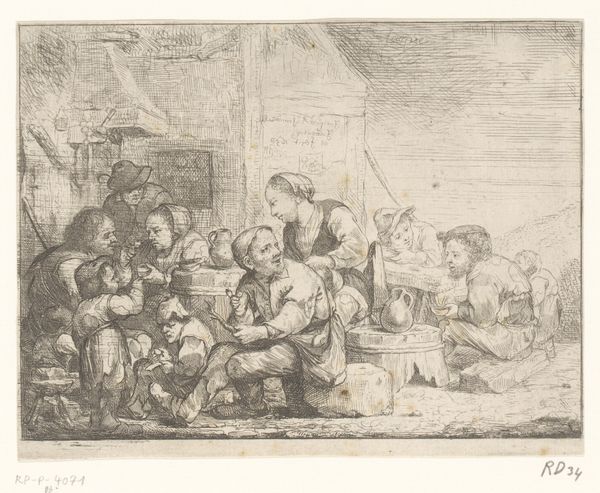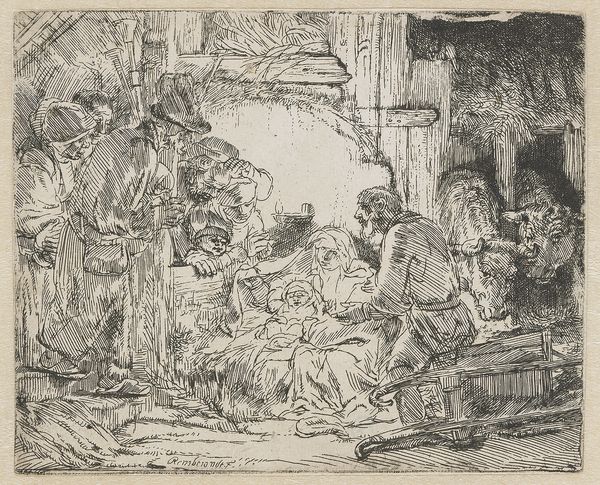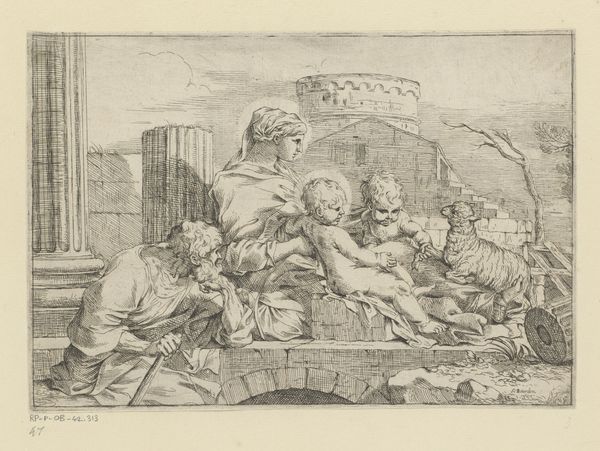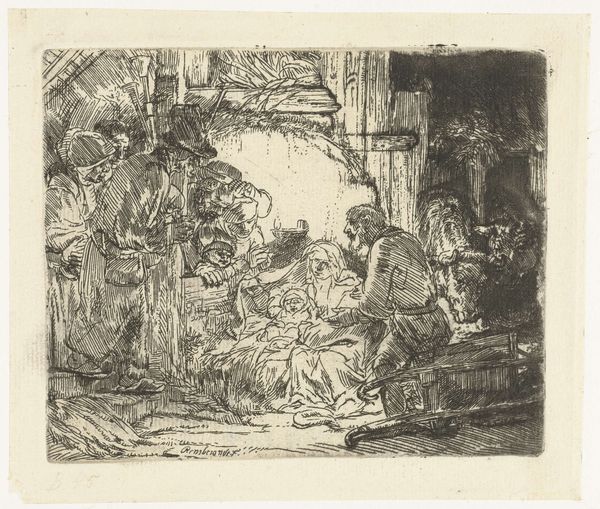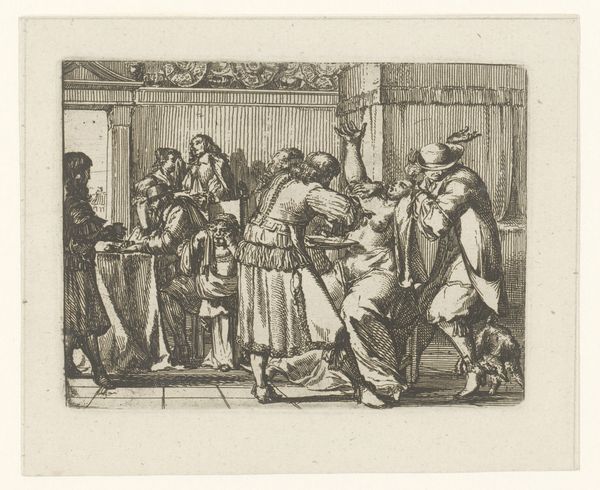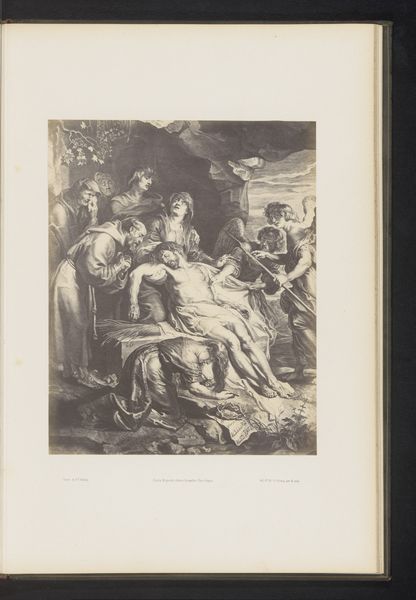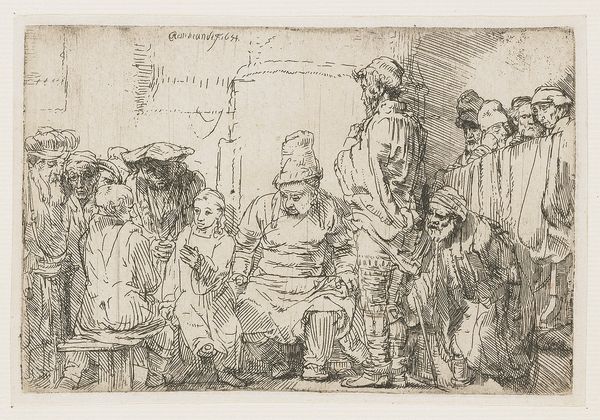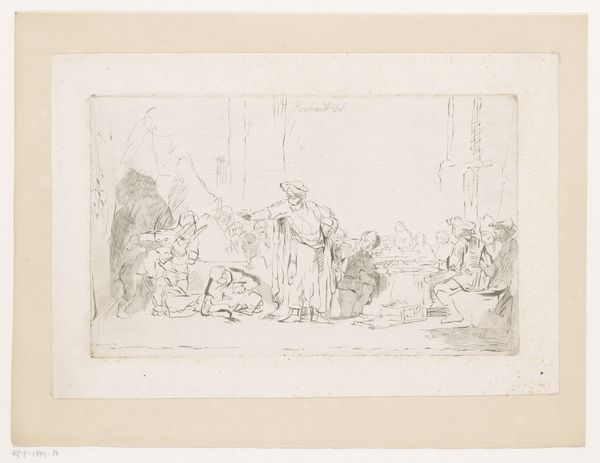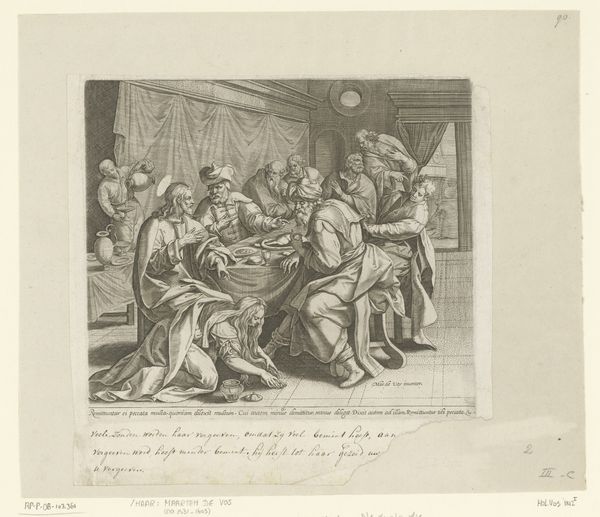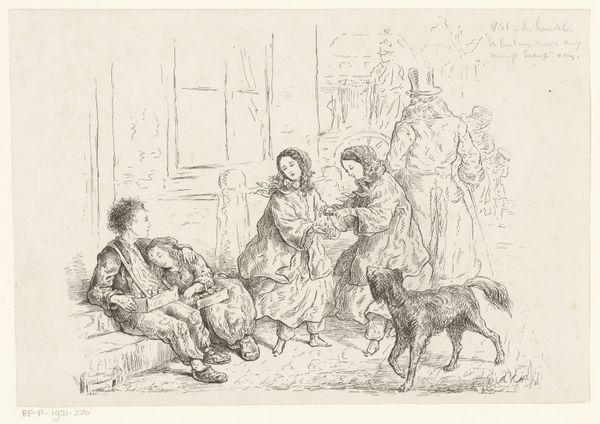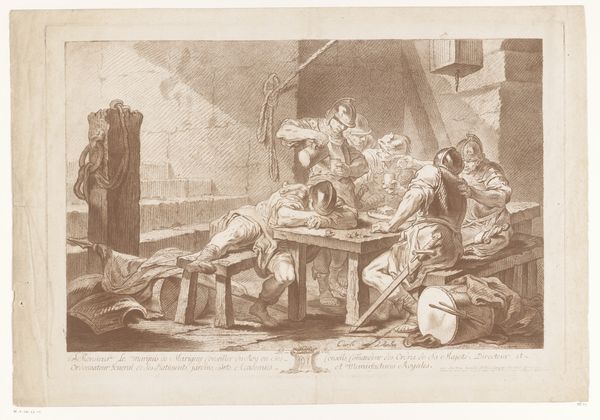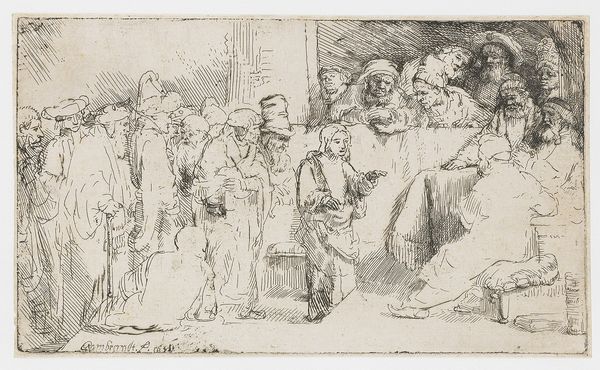
drawing, paper, ink
#
drawing
#
baroque
#
figuration
#
paper
#
ink
#
history-painting
Dimensions: height 137 mm, width 184 mm
Copyright: Rijks Museum: Open Domain
Frederick Bloemaert created this etching, "Adoration of the Shepherds," sometime in the seventeenth century in the Netherlands. In it, we see the shepherds visiting the newborn Jesus, a common subject in art at this time. But think about the conditions under which this image was made. The Dutch Republic had recently won its independence. It was a Calvinist country, but with a large Catholic minority. Bloemaert himself came from a Catholic family in Utrecht. The institutions that had previously supported religious art, like the church, were no longer the primary patrons. Instead, artists had to sell their work in the open market. The popularity of religious imagery suggests that there was still a demand for it, even in a Protestant society. Bloemaert would have been aware of the religious and political tensions of his time, and his decision to create this image may have been a way of subtly asserting his own religious beliefs. To fully understand the meaning of this etching, we need to look at the social and religious context in which it was created. By consulting historical documents and studying the lives of artists like Bloemaert, we can gain a deeper appreciation for the power of art to reflect and shape the world around us.
Comments
No comments
Be the first to comment and join the conversation on the ultimate creative platform.
